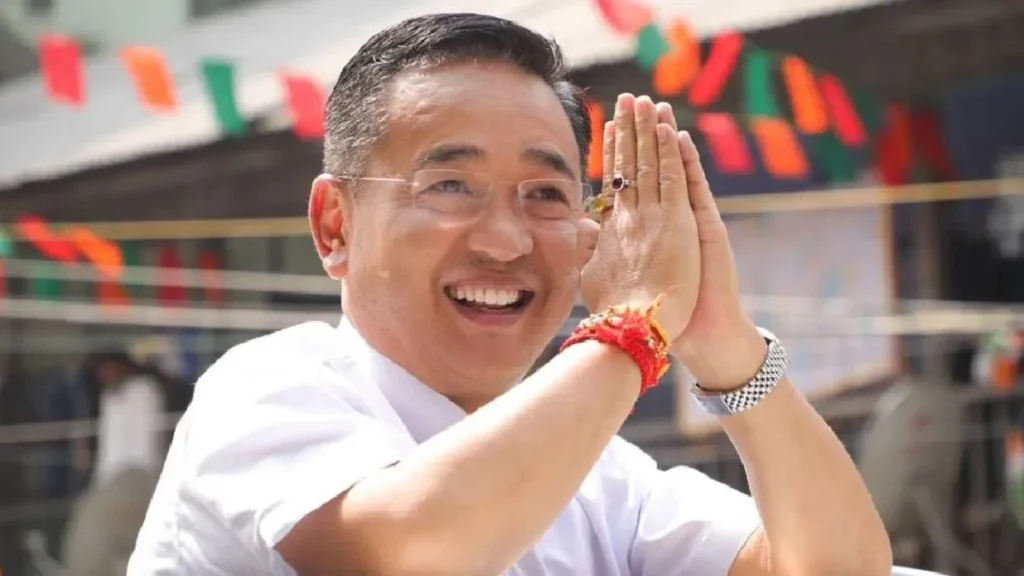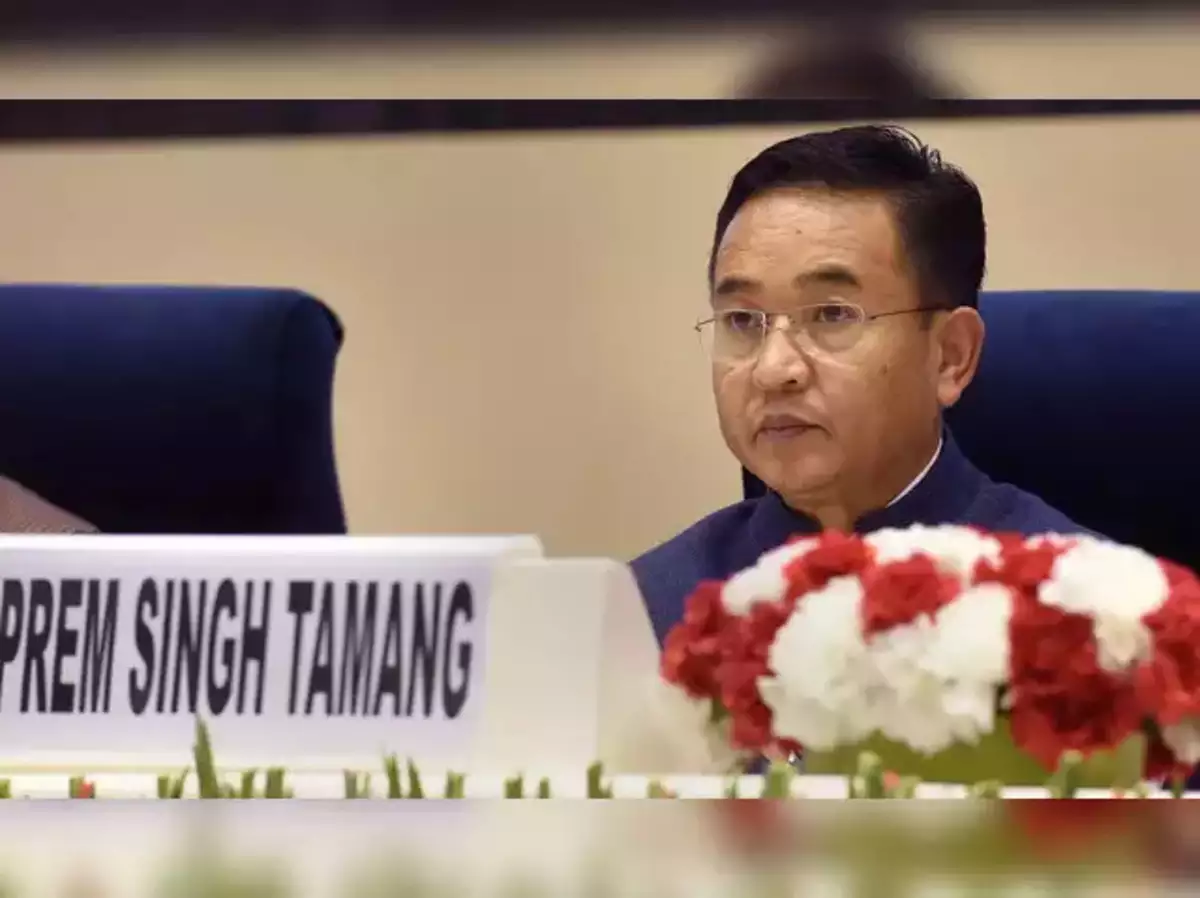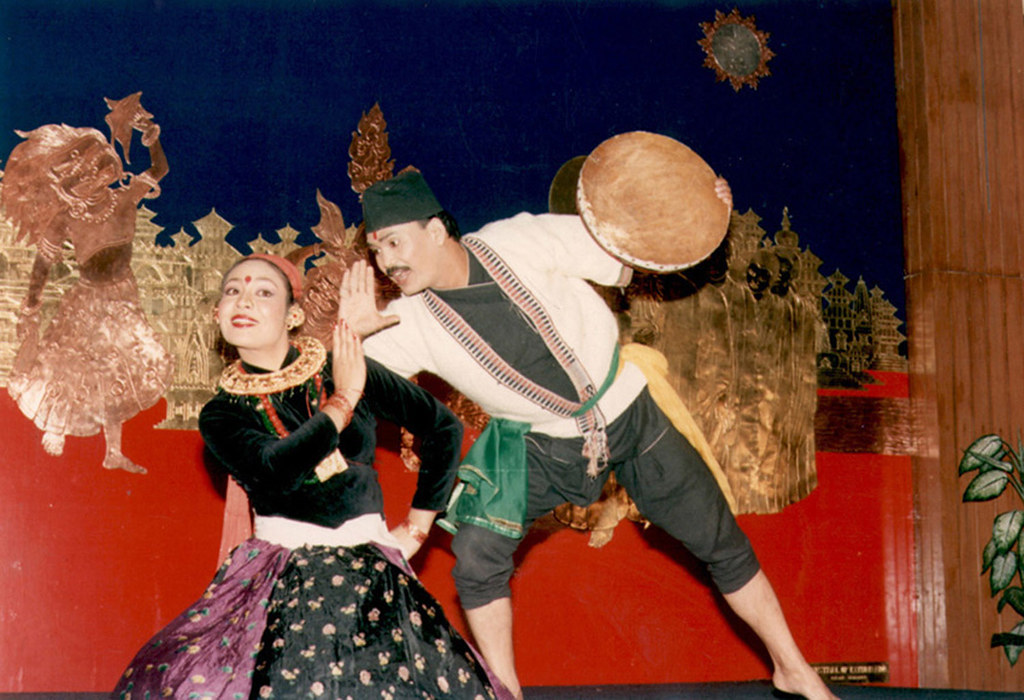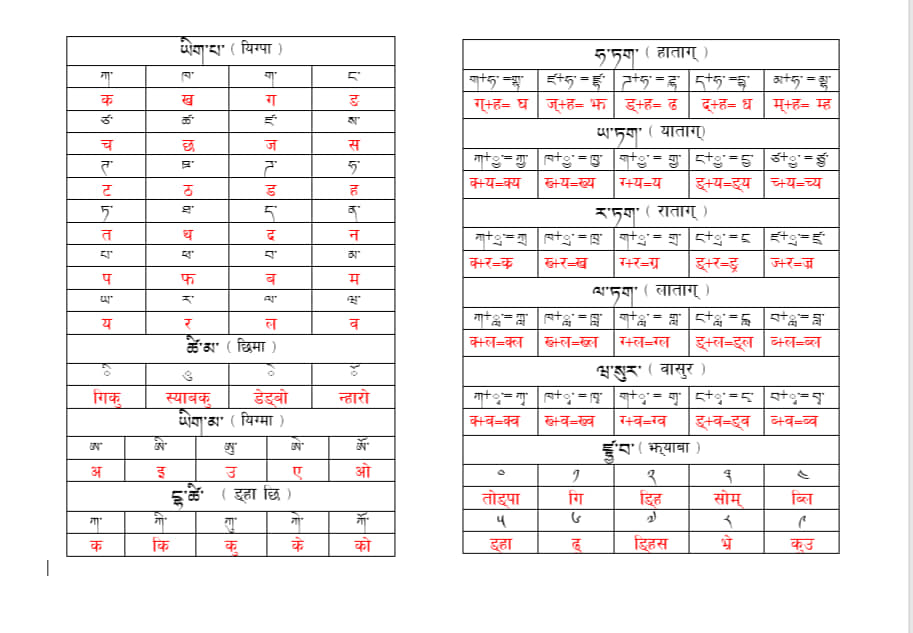Introduction

Prem Singh Tamang, a prominent figure in Indian politics, particularly in the state of Sikkim, has left an indelible mark on the region’s political landscape. Serving as the Chief Minister of Sikkim, his influence extends beyond his administrative duties, reflecting a deep commitment to the socio-economic development of the state. Tamang, also known by his political name P.S. Golay, is renowned for his grassroots approach, connecting with the common people and striving for their welfare.
Early Life and Background
Born on February 5, 1968, in the small village of Singling, West Sikkim, Prem Singh Tamang hails from a humble background. His early life was shaped by the traditional values of his family, which played a significant role in molding his character and outlook. Tamang pursued his education in Sikkim, completing his graduation before venturing into the world of politics. His early experiences in the rural environment deeply influenced his political ideology, focusing on the upliftment of the underprivileged.
Political Career
Prem Singh Tamang’s political journey began in the 1990s when he became actively involved in local politics. Initially, he joined the Sikkim Sangram Parishad (SSP) and quickly rose through the ranks due to his dedication and leadership skills. However, his path was not without challenges. The political environment in Sikkim was highly competitive, and Tamang had to navigate through various obstacles to establish himself as a formidable leader.
Formation of the Sikkim Krantikari Morcha (SKM)
Dissatisfied with the existing political dynamics and driven by a vision to bring about meaningful change, Prem Singh Tamang founded the Sikkim Krantikari Morcha (SKM) in 2013. The SKM was born out of a desire to challenge the ruling party’s dominance and offer a new direction for the state. Under Tamang’s leadership, the SKM emphasized transparency, accountability, and the empowerment of the marginalized sections of society. The party’s motto, “Janta Raj ma Janta ko Sarkar” (People’s Government in People’s Rule), resonated with the masses and set the stage for a new political era in Sikkim.
Rise to Power
The road to power for Prem Singh Tamang was marked by relentless effort and strategic campaigning. The 2014 and 2019 elections were critical in establishing SKM’s presence in Sikkim’s political arena. Despite facing stiff competition from established parties, Tamang’s grassroots connection and clear vision for the state won him significant support. In the 2019 elections, the SKM achieved a historic victory, ending the 25-year rule of the Sikkim Democratic Front (SDF). Tamang’s rise to the position of Chief Minister was a testament to his perseverance and the trust he had garnered among the people of Sikkim.
Prem Singh Tamang as the Chief Minister
Upon assuming office as the Chief Minister of Sikkim in 2019, Prem Singh Tamang set out to fulfill the promises made during his campaign. His administration prioritized transparency, good governance, and inclusive development. One of his first major initiatives was to enhance the state’s infrastructure, focusing on improving road connectivity and public services. Tamang also aimed to boost Sikkim’s economy by promoting tourism, agriculture, and small-scale industries.
Focus on Social Welfare
Prem Singh Tamang’s tenure has been marked by a strong focus on social welfare programs. He launched several initiatives aimed at improving the quality of education in the state. This included enhancing the infrastructure of schools, providing scholarships, and promoting vocational training to equip the youth with necessary skills. Health care has also been a priority, with efforts to improve medical facilities, ensure the availability of essential medicines, and implement health insurance schemes for the underprivileged.
Educational Reforms
Education has been at the forefront of Tamang’s social welfare agenda. Recognizing the importance of education in transforming lives, his government has invested heavily in building new schools and upgrading existing ones. Additionally, the introduction of scholarship programs for meritorious students from economically weaker sections has helped bridge the educational gap in the state.
Health Initiatives
In the health sector, Prem Singh Tamang has focused on ensuring that all citizens have access to quality healthcare. The establishment of new hospitals and clinics in remote areas has been a significant achievement. His administration also introduced health insurance schemes to protect the economically vulnerable from medical expenses.
Infrastructure Development
Under Tamang’s leadership, Sikkim has seen substantial infrastructure development. From better roads to improved public facilities, his government has made significant strides in modernizing the state’s infrastructure. This development is not only aimed at enhancing the quality of life for residents but also at attracting more tourists to Sikkim, thereby boosting the local economy.
Challenges Faced
Despite his achievements, Prem Singh Tamang’s tenure has not been without challenges. He has faced opposition from rival political parties and has had to navigate through controversies that have arisen during his time in office. Public protests and demands for various rights have also tested his leadership. However, Tamang’s ability to address these issues with patience and resolve has earned him respect from both his supporters and critics.
Prem Singh Tamang’s Leadership Style
Prem Singh Tamang’s leadership style is characterized by humility, accessibility, and a deep commitment to his constituents. Unlike many politicians, Tamang has maintained a close connection with the people, often engaging with them directly to understand their concerns. This hands-on approach has helped him build a strong rapport with the citizens of Sikkim. His leadership is also marked by a focus on consensus-building, often seeking the opinions of various stakeholders before making significant decisions.
Contributions to Sikkim’s Development
Tamang’s contributions to Sikkim’s development are multifaceted. His administration has worked tirelessly to promote economic growth by encouraging investment in key sectors such as tourism, agriculture, and small-scale industries. Additionally, his commitment to environmental conservation has led to the implementation of policies aimed at protecting Sikkim’s rich biodiversity.
Economic Growth
Under Tamang’s leadership, Sikkim has witnessed a period of economic growth. By promoting sustainable tourism and supporting local industries, his government has created new job opportunities and boosted the state’s revenue. This economic prosperity has allowed for further investment in public services and infrastructure, creating a positive cycle of development.
Environmental Conservation Efforts
Sikkim is known for its pristine environment, and Tamang’s administration has been dedicated to preserving this natural beauty. Initiatives such as banning single-use plastics and promoting organic farming have positioned Sikkim as a leader in environmental conservation. Tamang’s vision for a green and sustainable Sikkim has garnered national and international recognition.
Vision for the Future
Looking ahead, Prem Singh Tamang’s vision for Sikkim is centered on sustainable development and inclusive growth. He aims to further enhance the state’s infrastructure, improve the quality of education and healthcare, and promote economic self-reliance among the people. Tamang also envisions Sikkim as a model state in terms of environmental conservation, with policies that balance development with ecological preservation.
Future Goals and Objectives for Sikkim
Tamang’s future goals for Sikkim include the expansion of the state’s tourism industry, the promotion of organic farming, and the development of renewable energy sources. His administration is also focused on improving digital connectivity in the state, ensuring that even the most remote areas have access to the internet and modern communication tools.
Long-term Plans for SKM
For the Sikkim Krantikari Morcha, Tamang’s long-term plans involve strengthening the party’s presence at the grassroots level, fostering unity among its members, and continuing to advocate for the rights of the people. He envisions SKM as a party that not only governs but also empowers the citizens of Sikkim to take an active role in the state’s development.
Public and Media Perception
Prem Singh Tamang’s tenure as Chief Minister has been met with mixed reactions from the public and the media. While his supporters praise his dedication and the positive changes he has brought to the state, critics often highlight the challenges and controversies that have marked his time in office. Nevertheless, Tamang’s ability to maintain a strong connection with the people has helped him retain a significant base of support.
Media Coverage
The media’s coverage of Tamang has been diverse, with some outlets focusing on his achievements and others on the challenges he has faced. His policies and initiatives have been widely discussed in both local and national media, reflecting his impact on Sikkim’s political landscape.
Public Opinion
Public opinion on Prem Singh Tamang is largely positive, especially among those who have benefited directly from his social welfare programs. His approachable nature and commitment to the people have earned him a loyal following. However, like any political figure, he also faces criticism, particularly from those who are aligned with opposing political factions.
Awards and Recognitions
Prem Singh Tamang’s contributions to Sikkim and his leadership have been recognized at various levels. He has received several awards and honors, both from the state and national bodies, acknowledging his efforts to improve the lives of the people of Sikkim.
National and State-Level Honors
Tamang has been honored with awards that celebrate his dedication to public service and his role in promoting sustainable development. These accolades are a testament to the positive impact of his leadership on Sikkim.
Acknowledgments from Various Organizations
In addition to government recognition, Tamang has also been acknowledged by various non-governmental organizations for his work in areas such as environmental conservation, education, and social welfare. These recognitions highlight the broad scope of his contributions to society.
Personal Life
Despite his busy political career, Prem Singh Tamang maintains a balanced personal life. He is a family man, often seen spending time with his loved ones when not engaged in official duties. Tamang’s personal interests include reading, engaging in community service, and promoting Sikkim’s rich cultural heritage. His ability to balance personal and professional responsibilities is often cited as one of his strengths.
Family and Personal Interests
Prem Singh Tamang is married and has children, who are also involved in various social and community activities. His family plays an important role in his life, providing him with the support and encouragement needed to navigate the challenges of political leadership.
Balancing Personal and Professional Life
Balancing the demands of being a Chief Minister with personal life is no easy task, but Tamang manages this with grace. His dedication to his family is evident in the time he spends with them, even amidst his hectic schedule.
Conclusion
Prem Singh Tamang’s journey from a small village in Sikkim to the Chief Minister of the state is a story of perseverance, dedication, and a deep commitment to public service. His leadership has brought about significant changes in Sikkim, improving the lives of its citizens and setting a new direction for the state’s future. As Tamang continues to lead with vision and integrity, his legacy as a transformative leader in Sikkim’s history is assured.
FAQs
- Who is Prem Singh Tamang?
Prem Singh Tamang, also known as P.S. Golay, is the current Chief Minister of Sikkim and the founder of the Sikkim Krantikari Morcha (SKM) party. He is a prominent political figure in Sikkim, known for his grassroots approach and focus on social welfare. - What is the Sikkim Krantikari Morcha?
The Sikkim Krantikari Morcha (SKM) is a political party in Sikkim founded by Prem Singh Tamang in 2013. The party aims to bring about change in the state through transparency, accountability, and empowerment of the marginalized. - How did Prem Singh Tamang rise to power?
Prem Singh Tamang rose to power through strategic campaigning and strong grassroots connections. His party, the SKM, won the 2019 elections, ending the 25-year rule of the Sikkim Democratic Front (SDF), and he became the Chief Minister of Sikkim. - What are the major reforms initiated by Prem Singh Tamang?
Prem Singh Tamang has initiated several reforms in education, healthcare, and infrastructure. His government has focused on improving school facilities, providing scholarships, enhancing healthcare services, and modernizing the state’s infrastructure. - What is Prem Singh Tamang’s vision for Sikkim?
Prem Singh Tamang envisions Sikkim as a state with sustainable development, inclusive growth, and environmental conservation. His goals include improving education, healthcare, and infrastructure, promoting tourism and organic farming, and ensuring economic self-reliance for the people of Sikkim.




